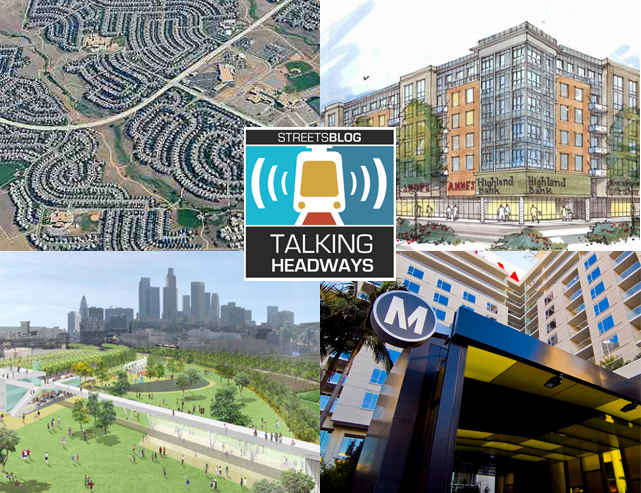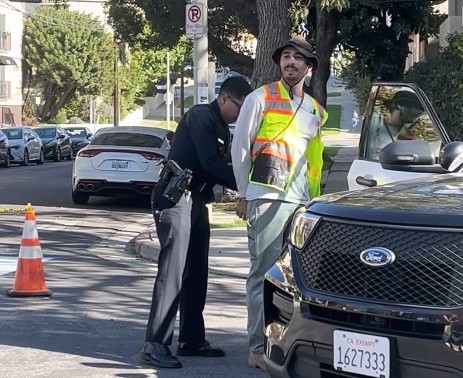This week, we're joined by Rob Goodspeed, assistant professor of Urban and Regional Planning at the University of Michigan. Goodspeed joins us to talk about his new book, Scenario Planning for Cities and Regions, which leads to a nice discussion about early origins of scenario planning, planning vs. forecasting, and the metrics used to compare scenario effectiveness.
If you prefer reading to listening, there is an edited transcript below the player. If you want a full transcript, click here.
Jeff Wood: Here in California, we have a specific target of reducing greenhouse gas emissions. And you mentioned SB 375 in the book specifically. I'm wondering, what are specific indicators that we can use to compare scenarios. I mean, and I know you mentioned a bunch of the books and then you also talk about the tools that people use to get there, but I'm wondering how we can compare whether a scenario might work for us or might not work for us.
Rob Goodspeed: I'm not sure I write this in the book, but I'll reveal it today. I think maybe I have mixed feelings about SB 375 in that, on the plus side, it has been very healthy to institutionalize a kind of mandate to look at regional growth patterns as part of the equation. And certainly even though they don't regulate land uses, but it's extremely constructive to call attention to local jurisdictions of the role that those decisions make on how well regional transportation is going to perform.
But on the flip side, I think it's very focused on particular impacts and greenhouse gas reductions. And in a way I think it has become now a formulaic kind of approach to planning. And maybe your question alludes at this that might actually foreclose or prevent some of the more flexible creative applications of scenario planning. So as I see it deciding not only the scope of the scenarios you want to create, you know, what are the issues you want them to contain? What kind of analysis are you going to do?
But then how you'll compare them are both questions that, of course, you need technical people at the table. But they are really answered through a process of collaboration among those who are involved in the project. And, you know, the best projects are mindful of external mandates. If it's in transportation, there's certain metrics that your state DOT or the federal government is looking for and wants, but they don't view that as the end all of their plan. They think hard about what other facets they want to look at. And I sometimes feel looking at some of the SB 375 plans — the sustainable community strategies that come out of that mandate — and I think the better ones have done that. They're tailored in some way to local perspectives and issues in a way that's not only limited to the greenhouse gases. But others seem a little bit more formulaic. I think that's inevitable when you have talked about mandates on one side and limited time and capacity on the other.
JW: That's a good point. You know, for me, I feel like I like having a single target that everybody can focus on and maybe that's not the right way to go about it, but it seems like if everybody's going in different directions, it might be harder to get to the same conclusion. And so I feel like AB 32, which is the overall greenhouse gas emissions bill, SB 375, you have SB 743, which is the changing from the measuring of LOS to VMT, which is actually just about to go into effect here in California on development projects, all of those things are going towards singular goal. And I find that really fascinating, but maybe that actually is a little bit anathema to the whole idea of imagining different scenarios and futures and people have different metrics and those types of things. So I want to be open-minded about it, but I also feel like there's a really good point to all pulling in the same direction.
RG: Well, I'm not sure I'd fully agree. One of the power of scenarios is they highlight the connections between different objectives and sometimes they have trade offs and sometimes there are synergies and they help you kind of think that through. And so in the book, I reproduce a figure creative by Peter Calthorpe, a very well known planner in California, where he shows how the built environment is connected to not only transportation, but also public health and equity and the economy and all these different dimensions.
And so I really believe in that kind of complex view of cities like you can't plan them well, just going one functional silo at a time. But obviously then it raises the question of like, how do you wrangle that complexity and make it comprehensible and make it focused? And so I absolutely agree with you that the best projects have a discrete set of usually they're quantitative metrics, but they don't necessarily need to be quantitative, but they're like, "What are the criteria that we're going to use to compare and look at the different scenarios?" And provide that focus.
You know, on the Gwinnett County project, there was a set of metrics and they have numbers, and sometimes it's more of a qualitative score, like, you know, up arrow, flat, you know, kind of based on their sense of what would actually happen for things you can't kind of read through a bottle. And I found, you know, some of the best small projects can be quite limited. It can be like 10. And I think building that consensus around what are those, or even if you can't build the consensus to ensure that like your different sub-constituency all can sort of see metrics that they care about, and then you use the scenario process to kind of educate them about, well, I know there's a few metrics here that, let's say environmentalists, are really keen on a few, but then you can kind of see like where are they moving together or where do we really face trade off?
And I think that the Envision Utah kind of practice is very more aimed at, "Let's build a strong consensus among everybody." I think, you know, Ernie Avin, his perspective is a little more realistic and he's more of a proponent of just make sure you have metrics that can speak to different constituencies and maybe realizing that planning can't fully resolve kind of political dilemmas, but the best planning is not ignorant of that minor. So that's a key component.
And I mean, this also sort of like why you're never done, you create a plan based on a set of metrics and there might be new or different issues that come along that you have to incorporate or, you know, bake into the new plan and that kind of ongoing learning process, I think can be very important, too.
JW: I think there's a good quote in the book that is frustrating. I think for a lot of people, but it makes a lot of sense and the quote is, "Good planning should ultimately be the quality of decisions made not only the amount of concrete poured," which I think for some folks might be a little frustrating, especially here in California during the housing crisis. But I think that kind of goes to your point a little bit.
RG: Absolutely. And you know, that's kind of another interesting conceptual shift with a scenario-based plan is if your plan is just a vision, then it's pretty simple to know; you can judge it based on was it implemented. That's a kind of common sense way of looking at evaluating the plan and, but a scenario based plan, that's only one part of it. And frankly your scenario might actually cause you to decide not to do certain things. And so that was the point of the quote is the decision maybe not to build a highway can be the outcome of the good scenario plan. My understanding of the LUTRAQ project in Portland was not building the highway segment is still what they consider what it did.
So, you know, kind of to flip over to the California debate, I mean, on the one hand at the regional scale, you do have regional scenarios being built for land use, but I'm observing this whole debate around housing costs. You know, a lot of the solutions, they're not actually planning solutions -- you know, abolish single family zoning, allow development that was ultimately unsuccessful that was trying to mandate TOD -- and then very quickly they realized that those sort of blanket policy reforms, it actually raises more questions or concerns.
I kind of view, there's an opportunity there of what in, you know, in Europe and other countries around the world, they talk about densification, you know, of course hate the term, never use it in a public meeting, but the point is they actually have had a deliberate plan of like, "Oh, if we're going to like grow our city without sprawling, where should we put the density?" And that's a whole category of professional practice. I think there's tremendous potential in the U.S. to do that. And maybe in very limited ways, you know, the Madison, Wisconsin comp plan was looking at, "OK, where do we densify? What are the nodes going to be?" But it's just so rarely talked about. And so in my mind, like sure, you know, abolish single family zoning, but that's very different than very carefully figuring out like, where do you have the infrastructure? Where do you actually want to add housing? What types of housing, what does it look like? Try to get the neighbors' input so on and so forth, and really actually plan for growth and not just use the market to tell you where it's going to happen.






